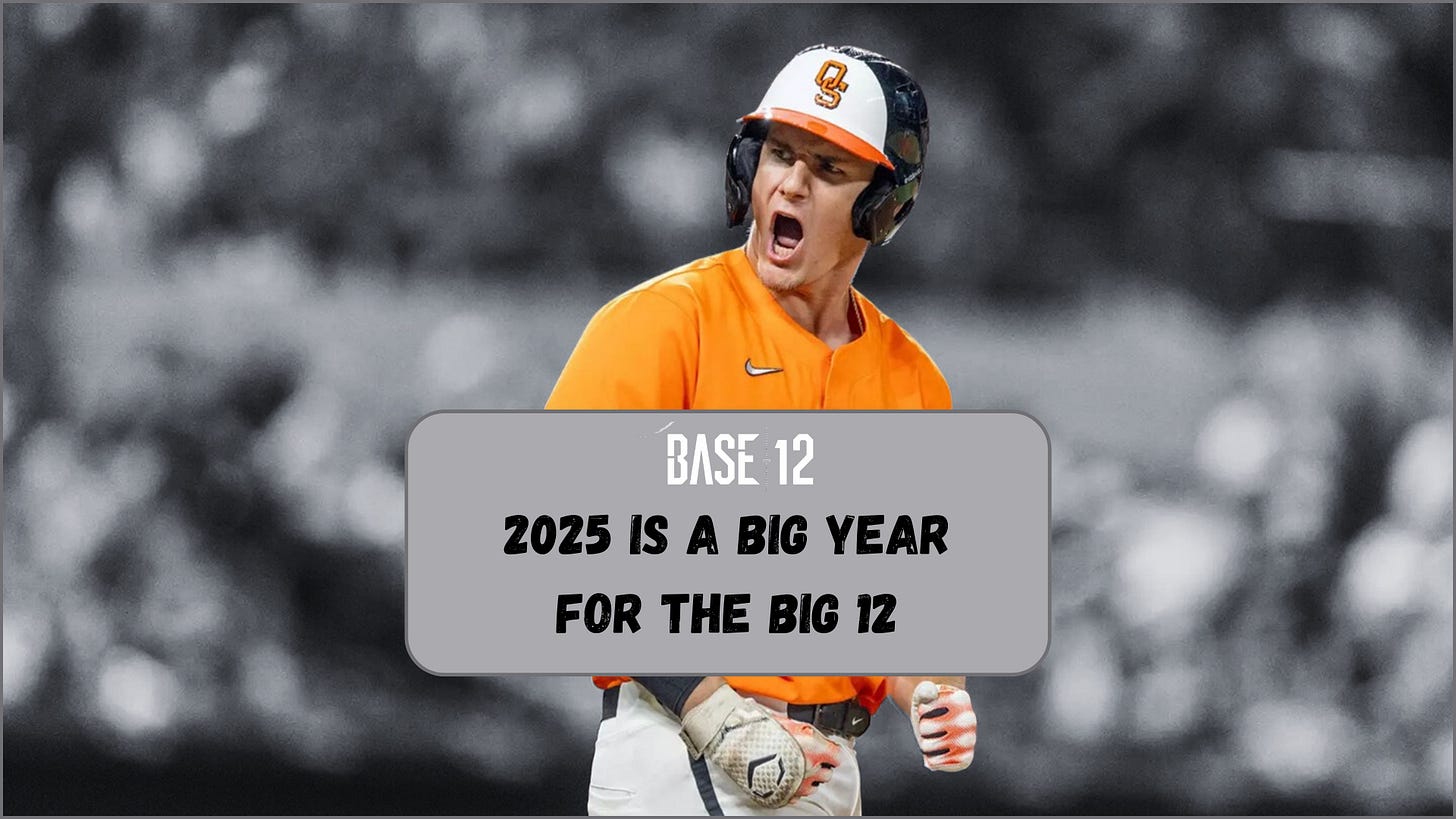2025 is a Big Year for Big 12 Baseball
The Big 12 has ample opportunity this season to prove it's keeping pace with the SEC and ACC.
Once again, we’ve arrived at college baseball season.
How blessed we are.
For the Big 12, now without Texas and Oklahoma, 2025 represents an opportunity.
Only two conferences were represented in the 2024 College World Series, a signal of the strength of both the SEC and the ACC, and a signal that, just like in football and basketball, talent is beginning to congregate in specific areas of the country.
But the Big 12’s 14-team league in its current construction has brands with rich baseball traditions, including Arizona, Arizona State, Oklahoma State, TCU and Texas Tech.
It has talented teams capable of being disruptive in conference play and in the postseason like Kansas State, West Virginia, UCF and Cincinnati.
The question lingers: how can the Big 12 keep up? The answer is simple: get teams in the postseason.
“For us, our conference, it’s about, now that we have more teams in our conference it’s about getting more teams into postseason play,” TCU head coach Kirk Saarloos said during a press conference for the Amegy Bank College Baseball Series presented by Kubota.
“Once you get into postseason play it obviously comes down to whose playing the best that particular weekend. We’ve just got to get more teams in, and to do that we’ve got to play better baseball.”
Of the 14 current Big 12 baseball programs, all 14 have made a regional in the the past 10 full seasons (2020 excluded). Seven have reached a Super Regional. only four (Arizona, Oklahoma State, TCU and Texas Tech) have reached the CWS in that time span.
The Big 12 hasn’t had more than five teams reach the postseason in a single year since 2021. With an expanded conference, 2025 is the year to do that.
Baylor head coach Mitch Thompson and Kansas State head coach Pete Hughes were on the same call as Saarloos, and both reflected on what the Big 12 can do to keep pace.
For Thompson and Hughes both, the opportunity to play head-to-head with top teams across the country in non-conference play is key to strengthening the Big 12’s brand as a baseball conference.
“All these opportunities to play other people from around the country are just continuing to build the brand,” Thompson said.
The Big 12 has ample opportunity to represent and build the brand during non-conference play this season. Big 12 schools will face teams from the SEC 20 times. They’ll face ACC squads 13 times. Beyond those two conferences, lauded as the two premiere leagues, Big 12 schools will play 11 other schools that finished in the Top 50 of last season’s RPI a total of 33 times.
That’s a total of 66 games against prime competition. Most of those games come in February and early March, while a handful of others are midweek games that carry into April. Timing is less relevant than the competition itself, though, according to Hughes.
“They don’t ask you when you have those quality wins,” Hughes said. “Weekend one, two or the last one, it’s just a quality win is a quality win. It just happens to have some opportunity for us to be in a great tournament second weekend out of the year and kick off the college season against some tradition-rich programs.”
It all kicks off this Friday.
Oklahoma State and Arizona join a field that includes Texas, Clemson and Ole Miss in the Shriners Children’s College Showdown.
Texas Tech hits the road for a series against North Carolina. Cincinnati travels to Duke. Baylor squares off against Auburn and Oregon State.
Arizona and TCU both play a weekend series against San Diego, defending WCC champion that returns two weekend starters. TCU and Kansas State both matchup with Arkansas.
The Horned Frogs also host Southern Miss for a weekend series, while the Wildcats have a pair of games against Coastal Carolina and one-off games against North Carolina and Nebraska.
“Ultimately, you get what you put in,” Saarloos said. “With the investment in college athletics and college baseball around the country it’s definitely something you have to look at in terms of, kids obviously go to places that feel like they’re going to get an opportunity to play at the highest level, and they want to be at places that invest in baseball and have high expectations.
“When you have high expectations you also have good investment in the program.”





